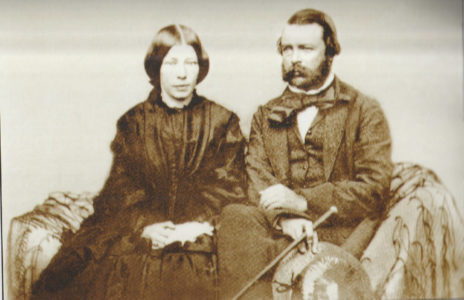
As Howick and districts count down to the 175th anniversary, the Times continues its series by Alan La Roche giving readers a glimpse of life as it used to be. The countdown began at the 170th in 2017
It is with some concern that our former residents of Howick district did not observe the Treaty of Waitangi and give Maori the equal education given to pakeha. There were three blocks of land set aside “for the benefit of the Native race” many years ago near Howick.
1) At Whitford, 121 acres was set aside and administered by the St Stephens Trust Board, who managed St Stephen’s School at Parnell School for Maori. For a short period, 16 pupils, living nearby, attended – but with financial difficulties it closed. It was then leased for farming activities.
2) Doctor John Bacot, surgeon who lived at Bleak House, 1848 to 1859, gave 155 acres in Macleans Road “for the education of the native race”. Instead of building a school (until recently) it was leased to Pakuranga farmers by the Grammar Schools Board. Part of this land is now Macleans College land; the rest is Macleans Reserve. This land had nothing to do with the Maclean family. Their land was on the southern side of Macleans Road. Alongside, there is a photo of Dr Bacot with his wife sitting on a Maori feather cloak given by grateful Maori in 1858.
3) Charles Roberts built a two storeyed homestead on his farm which is now part of Saint Kentigern College boarding establishment. He gave 53 acres for Maori education, but it was leased for farming initially for £31 pounds a year for 21 years from August 1861. As farms were developed, the access road was called Grammar School Road which is now at the back of Saint Kentigern College, as rent was paid to the Grammar Schools Board.
Historically, the role of Maori Schools was complicated due to the War in the Waikato and the associated tensions. Maori parents were eager for their children to be educated. Many schools taught the basic reading English, arithmetic, spelling and geography. Ngai Tai supported the Government and remained on friendly terms with local farmers. The Rev Vicesimus Lush recorded that missionary Rev John Wilson, who lived in Cascades Road, and Rev Robert Burrows, were considering setting up a “Native Training School” at Howick in 1854. The idea was lost.
Looking at old photographs of this area, there were always Maori included in the classes. Due to European diseases such as influenza, measles and scarlet fever, Maori often died as they had no acquired immunity, hence the tapu in early times.
The Maori population was small in this part of Auckland. For many years, Maori education was kept separate from Pakeha education.
After the 1877 Education Act, education became compulsory, secular (no religious instruction) and free. Education may still not be free, but many improvements are obvious.
At last, all literature is not based on English writers such as Shakespeare, Burns or Dickens. There are excellent New Zealand writers and books available to schools.
There was a directive that corporal punishments (the cane or leather strap) should be avoided in Maori schools. Eventually this became mandatory for all New Zealand schools and in the community. Severe punishments did not assist learning.
In earlier years Maori pupils were punished for using Te Reo but, fortunately, it is now taught in many schools.
- Alan La Roche MBE
Howick Historian
alanlaroche@xtra.co.nz











